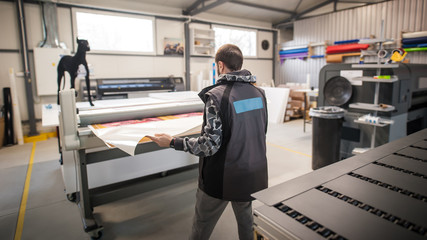From customization and personalization to streamlined production processes, 3D printing offers a unique opportunity for manufacturers.
Discover how 3D printing in manufacturing can accelerate time to market and lead to significant cost savings.
Continuous Advancements in 3D Printing Technology
You’ll be amazed by the continuous advancements in 3D printing technology, which are revolutionizing the manufacturing industry. The integration of 3D printing in manufacturing has paved the way for a new era of production. With the use of specialized manufacturing 3D printers, companies can now produce complex and intricate industrial parts with ease.
- One of the key benefits of 3D printing in manufacturing is its ability to enable rapid production. Traditional manufacturing methods often involve lengthy processes and high costs, but with 3D printing, objects can be created layer by layer, significantly reducing production time and costs.
- 3D printing in manufacturing allows for the creation of customized products and parts that meet specific requirements. This level of customization is particularly beneficial in industries such as aerospace and automotive, where lightweight and durable components are crucial.
- Furthermore, 3D printed industrial parts have proven to be highly reliable and efficient. These parts exhibit excellent mechanical properties and can withstand harsh conditions. As a result, more industries are adopting this technology to enhance their manufacturing processes.
Expanding Applications of 3D Printing in Manufacturing
The applications of 3D printing in manufacturing continue to expand, with advancements in industries such as automotive, fashion, and medical. 3D printing has revolutionized the way we manufacture products by allowing for the production of complex geometries and intricate designs that were previously impossible or costly to create using traditional manufacturing methods.
3D printers in manufacturing
With the use of specialized 3D printers, manufacturers can now produce lightweight and durable parts for the aerospace industry, manufacture medical implants and prosthetics with precise specifications, and even customize consumer products based on individual preferences.
In terms of 3D printer manufacturing, there are various industrial 3D printers available that cater to different needs. These include high-performance printers like the T3500SE and T3000SE, versatile printers like the T2000, high-temperature printers like the T850P, and mid-range printers like the T1250.
When it comes to what type of manufacturing is possible with 3D printing, it offers numerous advantages.
- It enables rapid prototyping and customization by bringing additive manufacturing capabilities in-house, saving time and cutting costs.
- Additionally, it allows for faster design and production processes by creating end-use parts in a matter of hours instead of months. This can lead to faster time-to-market for businesses looking to respond quickly to customer demands.
Overall, 3D printing in manufacturing has opened up new possibilities across various industries while providing cost reduction opportunities and greater flexibility in design and production processes.
Benefits of 3D Printing for Customization and Personalization
3D printing offers you the ability to fully customize and personalize products, allowing for unique and individualized end-user experiences. With this technology, you can create products that are tailored to your specific needs and preferences. Whether it’s a custom-fit prosthetic limb or a personalized phone case with your name engraved on it, 3D printing enables you to bring your ideas to life in a tangible form.
- One of the key benefits of 3D printing for customization is its ability to shorten production time. Traditional manufacturing methods often require lengthy setup processes and tooling, but with 3D printing, you can go from design to finished product in a fraction of the time. This not only accelerates the production process but also allows for frequent product launches and an agile development process.
- In addition to saving time, 3D printing in manufacturing also expands the possibilities beyond traditional methods. There are no limitations when it comes to geometries and designs, meaning you can create intricate and complex shapes that would be difficult or impossible using other manufacturing techniques. This opens up new opportunities for innovative designs and products.
- 3D printing reduces waste through efficient resource utilization. Unlike traditional manufacturing processes where excess materials are often discarded, 3D printing only uses the exact amount of material needed for each product. This not only minimizes waste but also saves storage space and reduces overproduction.
Overall, the ability to fully customize and personalize products is one of the major advantages of 3D printing in manufacturing. It allows for greater flexibility, faster production times, reduced waste, and opens up a world of design possibilities. So whether you’re looking for a unique gift or need a specialized part for your business needs, 3D printing offers endless opportunities for customization and personalization.
Overcoming Challenges in Adopting 3D Printing for Large-Scale Production
Addressing the challenges of adopting 3D printing for large-scale production can lead to significant advancements in manufacturing capabilities.
- Scaling up production with 3D printing requires addressing cost considerations, such as the high initial investment in equipment and materials.
- Availability of suitable materials for specific industries is crucial to ensure the desired properties and performance of printed parts.
- Post-processing requirements, such as cleaning, curing, or finishing, need to be carefully managed to achieve the desired quality and functionality of printed parts.
- Overcoming technical challenges related to print speed, accuracy, and reliability is essential for successful implementation of 3D printing at a larger scale.
By tackling these challenges head-on, manufacturers can unlock the potential benefits of 3D printing for large-scale production:
- Increased flexibility and agility in manufacturing operations due to reduced setup time and faster iteration cycles.
- Cost savings through decreased material waste and optimized use of resources.
- Customization options that allow for personalized products tailored to individual customer needs.
- Accelerated time-to-market by streamlining design iterations and reducing lead times.
To fully leverage the advantages that 3D printing offers for large-scale production, manufacturers must invest in research and development efforts focused on pushing the boundaries of current technologies. By doing so, they can revolutionize traditional manufacturing processes and open doors to new possibilities in product design, supply chain management, and customer satisfaction.
Revolutionary Impact of 3D Printing on Time to Market
Boost your manufacturing process and accelerate time to market with the revolutionary impact of 3D printing. This advanced technology allows you to create complex objects based on a 3D digital model, layer by layer. With the use of materials like plastics and metals, 3D printing enables rapid and low-cost production of both short runs and one-of-a-kind parts.
Use of HP Multi Jet Fusion in 3D Printing
One example of groundbreaking 3D printing technology is HP Multi Jet Fusion, which offers the production of complex parts with controllable physical and functional properties. It has significantly reduced costs while doubling performance, making it an ideal choice for manufacturers looking to improve their processes.
Furthermore, HP’s Metal Jet technology takes 3D printing to another level by enabling high-volume manufacturing of production-grade metal parts. This innovative method delivers mechanically functional final parts with higher productivity and lower cost compared to traditional methods.
By incorporating 3D printing into your manufacturing strategy, you can benefit from shorter production times, fully customized products, increased supply chain flexibility, and reduced waste. The possibilities for innovation are endless as more customers scale for production and collaborate through a growing ecosystem of partners.
Embrace the power of 3D printing in your manufacturing process today and revolutionize your time to market.
Cost Savings and Efficiency Gains With 3D Printing in Manufacturing
By incorporating 3D printing into your manufacturing strategy, you can achieve significant cost savings and improve efficiency. Here are some key benefits of using 3D printing in manufacturing:
Reduced Material Waste
With traditional manufacturing methods, a significant amount of material is wasted during the production process. However, with 3D printing, materials are only used where they are needed, minimizing waste and reducing costs.
Shortened Production Time
3D printing allows for faster production compared to conventional methods. The ability to print parts directly from a digital file eliminates the need for tooling and reduces lead times.
Design Complexity
3D printing enables the creation of complex geometries that would be difficult or even impossible to achieve with traditional manufacturing processes. This opens up new possibilities for innovative designs and functional prototypes.
Customization
3D printing allows for the production of fully customized products and parts. This level of customization can lead to higher customer satisfaction and increased market competitiveness.
Incorporating 3D printing into your manufacturing strategy can revolutionize your operations by saving costs, improving efficiency, enabling design complexity, and providing customization options. Embracing this technology will give you a competitive edge in today’s rapidly evolving manufacturing landscape.
Future Outlook: Integrating 3D Printing Into Manufacturing Strategies
The future outlook for integrating 3D printing into manufacturing strategies looks promising as companies explore the potential benefits and applications of this technology. With its ability to produce complex objects based on a 3D digital model, 3D printing offers a range of advantages for manufacturers.
- One major benefit is the ability to create fully customized products and parts for end users, shortening production time and enabling the production of custom-fitted and individualized products. Additionally, 3D printing increases supply chain mobility, flexibility, and adaptability, reducing costs and waste.
- Furthermore, prototyping becomes more successful and cost-effective with instant printing of new models or parts.
- The technology also enables the production of incredible volumes in a short time frame.
However, there are some challenges that need to be addressed when integrating 3D printing into manufacturing strategies. These include changing mindsets regarding design considerations for 3D printing from the early stages of product development and developing new skills among engineers.
Despite these challenges, the potential applications for 3D printing in various industries such as automotive, fashion, and manufacturing are vast. From creating complex geometries and intricate designs to producing lightweight parts for aerospace industry or medical implants with precise specifications, 3D printing opens up new possibilities beyond traditional methods.



